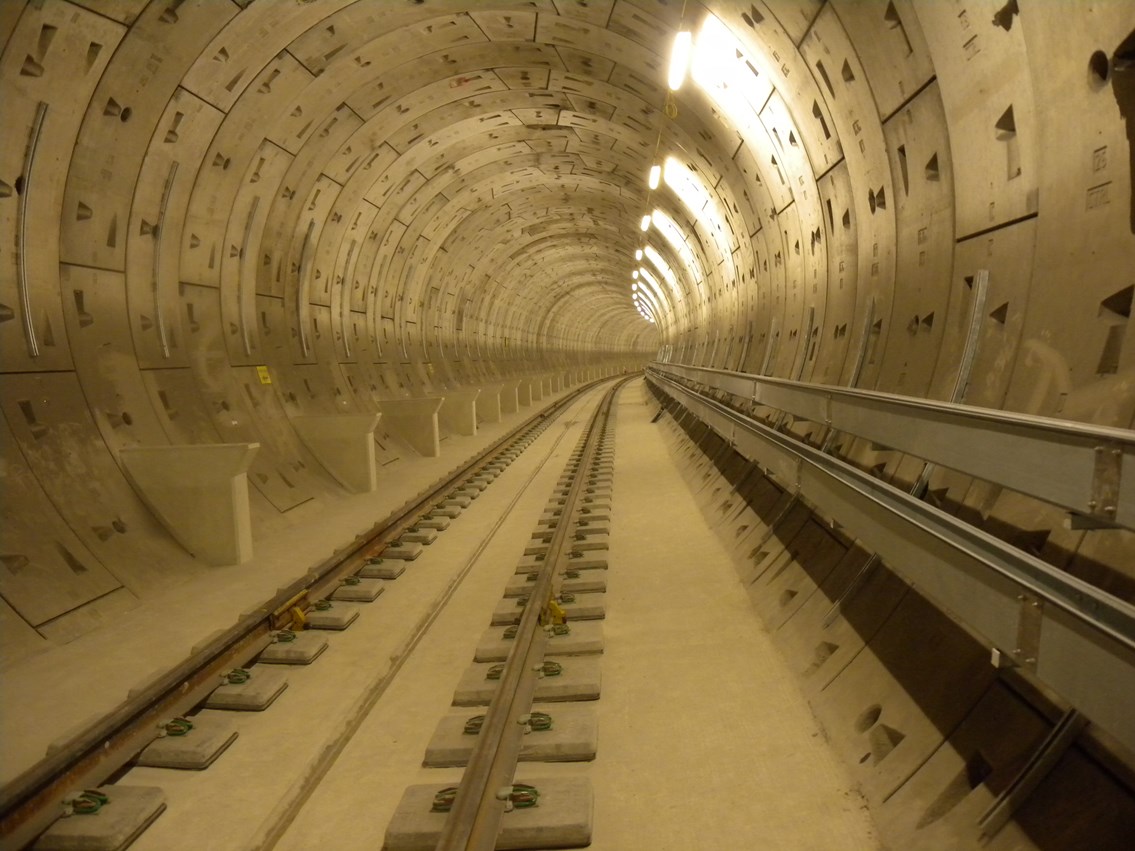Wednesday 11 Sep 2013
Thameslink tunnels to transform the railway in London and the south east
- Region & Route:
- National
The first stage of work to connect two rail tunnels to the national network will take place this weekend in a development which will transform the shape of rail services in the south of England.
Canal Tunnels in north London, which run between the East Coast main line near King’s Cross station and the Thameslink route at St Pancras station, will link for the first time local and regional services from Cambridge and Peterborough with the route to Gatwick, Brighton, the south coast and Kent.
Connecting these services, which are currently operated by First Capital Connect, to the Thameslink route through central London is a key stage in the evolution of the rail network and a vital part of delivering capacity improvements in and around London.
Trains travelling through Canal Tunnels will provide up to eight of the possible 24 services an hour which will travel through central London when the £6bn Thameslink Programme is completed in 2018.
The Thameslink Programme will provide a significant increase in capacity into, through and out of London and provide better connections with Gatwick and Luton airports, Crossrail services at Farringdon and Eurostar and high speed services at St Pancras International.
Canal Tunnels were built at the same time as the redevelopment of St Pancras station between 2004 and 2006. Network Rail is currently installing track, signalling, power and safety systems to run services through them from 2018.
Dave Ward, Network Rail’s route managing director for London and the south east, said: “Connecting Canal Tunnels with the two railway lines running into King’s Cross and St Pancras is one of the key parts of the Thameslink Programme.
“The tunnels are just as important as the redevelopment of London Bridge station in helping to deliver capacity benefits in and out of London. They will also provide a range of journeys between the south coast and East Anglia which were previously not possible.
“Thameslink will transform the railway across London and the south east, providing passengers with longer trains, more seats and a better level of service to meet the ever increasing demands placed on the rail network.”
Passengers are already benefitting from the Thameslink Programme. Longer 12 car trains are being used on the route and stations including Blackfriars, West Hampstead Thameslink and Farringdon have been rebuilt.
Work is ongoing to transform London Bridge station, one of the biggest engineering challenges currently underway on the railway. When complete, each platform will be connected by a street level concourse, bigger than the pitch at Wembley stadium, which is being constructed below the current platforms. The station was first built in 1836 and with more than 50m users, is one of the busiest stations in Britain with almost 50% more passengers than Gatwick Airport and more than twice the number it was designed for.
When Thameslink is complete, a new fleet of eight and 12 car trains will operate through the Canal Tunnels on the route between Cambridge and Peterborough, central London, Kent and Brighton as well as to Gatwick and Luton airports and Bedford.
The first stage of connecting the tunnels to the network - which will include track work on the East Coast main line near the tunnels’ entrance - will take place over the weekend of 14 and 15 September and will impact train services into King’s Cross. Network Rail is working closely with all train operators affected by the Thameslink programme to minimise disruption and provide information to passengers.
Further work will be needed in the future to connect the tunnels to the Thameslink route and East Coast main line. Work which will impact services will be advertised and passengers should check www.nationalrail.co.uk or www.thameslinkprogramme.co.uk.
Notes to editors
Services provided by First Capital Connect, East Coast, Grand Central and First Hull Trains may all be affected by Thameslink work as the Thameslink programme progresses. Passengers should check with their train operator for the latest information.
Contact information
Passengers / community members
Network Rail national helpline
03457 11 41 41
Latest travel advice
Please visit National Rail Enquiries
Journalists
Network Rail press office - National
020 3356 8700
mediarelations@networkrail.co.uk
About Network Rail
We own, operate and develop Britain's railway infrastructure; that's 20,000 miles of track, 30,000 bridges, tunnels and viaducts and the thousands of signals, level crossings and stations. We run 20 of the UK's largest stations while all the others, over 2,500, are run by the country's train operating companies.
Usually, there are almost five million journeys made in the UK and over 600 freight trains run on the network. People depend on Britain's railway for their daily commute, to visit friends and loved ones and to get them home safe every day. Our role is to deliver a safe and reliable railway, so we carefully manage and deliver thousands of projects every year that form part of the multi-billion pound Railway Upgrade Plan, to grow and expand the nation's railway network to respond to the tremendous growth and demand the railway has experienced - a doubling of passenger journeys over the past 20 years.
Follow us on Twitter: @networkrail
Visit our online newsroom: www.networkrailmediacentre.co.uk

